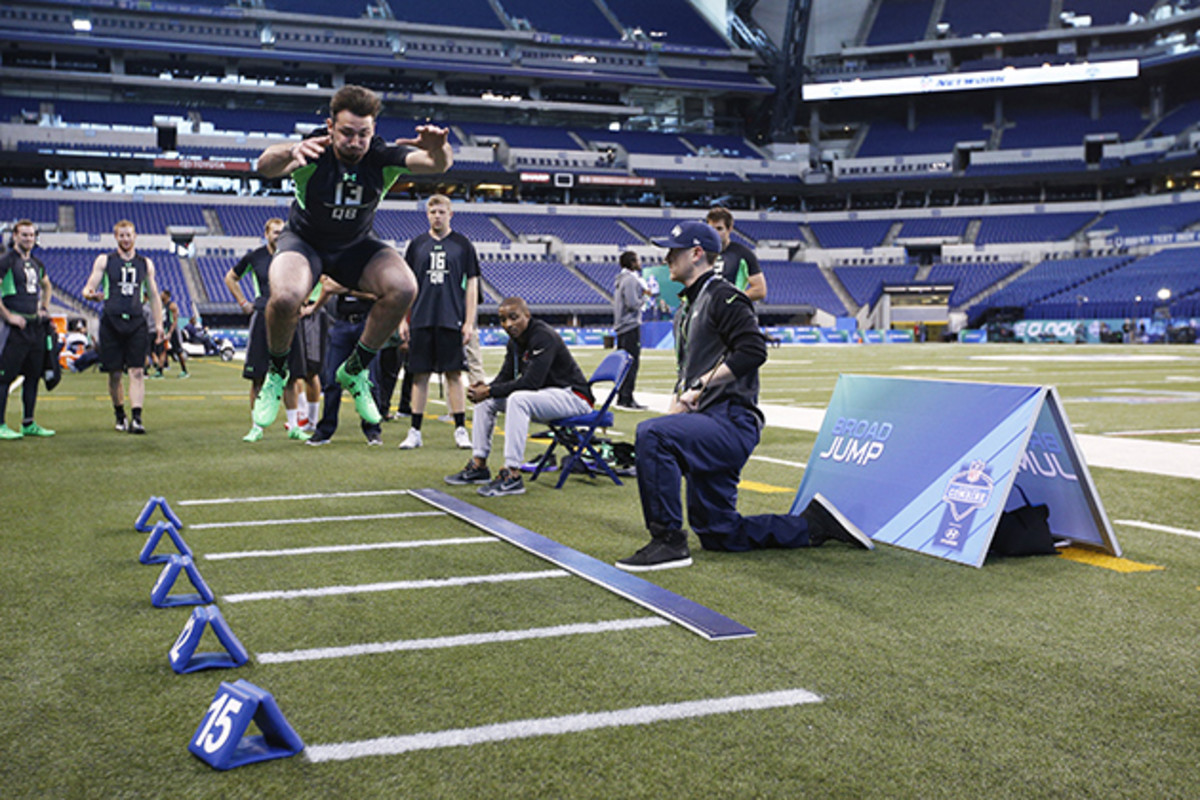The link between genetic testing and NFL talent identification

After the completion of this year’s NFL Combine, coaches, scouts and teams across the league now have data on players’ performances in the 40-yard dash, vertical jump, bench press, shuttle runs, the broad jump and more. In addition to these numbers, there are also the results of psychological tests and interviews for teams to digest prior to the NFL Draft in late April. But one thing missing in the evaluation of NFL prospects is genetic testing. Can an NFL coach use genetic information to guarantee his pick is a sure thing?
It has been difficult identify gene variants that are highly predictive of athletic ability. In a recent consensus statement on genetic testing for predicting sports performance and talent identification in the British Journal of Sports Medicine, 24 of the world’s leading experts on genetics and exercise concluded that:
“The general consensus among sport and exercise genetics researchers is that genetic tests have no role to play in talent identification or the individualized prescription of training to maximize performance….Consequently, in the current state of knowledge, no child or young athlete should be exposed to genetic testing to define or alter training or for talent identification aimed at selecting gifted children or adolescents.”

However, this may not be the final word on the topic and the authors of the consensus statement note that there are ongoing studies and new initiatives that may ultimately lead to new information in the future. For now, the NFL’s approach—using physical tests like the 40-yard dash or vertical jump—is more likely to be an indicator of performance than a gene test, because it includes the combined effects of heredity, training, skill and biomechanics. In other words: not everyone with a lot of fast twitch muscle fibers can jump really high or run really fast. It has also been hard to identify gene variants that explain elite endurance performance.
• MORE EDGE: Curry Vision: The science behind Steph's top-tier aim
So, what is the alternative for talent identification? I like to say that a stopwatch will tell you more than a gene sequencer. One of the best examples of this approach comes from talent identification programs for rowers, who tend to be big and tall people who also have high levels of aerobic capacity. Both the Australian and British rowing programs have systematically searched their countries people who fit this description. And at the 2012 Olympics in London, British rowers who came from the talent ID program won five gold medals and one bronze. An early example of talent ID and rowing came in 1996 when Cyrus Beasley represented the U.S. in rowing after being found at Emory University in Atlanta—a fine school but hardly a rowing or athletic power. U.S. Rowing is doing more in the talent identification area, but from what I can tell they are not systematically traveling around the country and going to college recreational centers and gyms looking for the right body types.
Get in the game: Virtual reality could be the future of live sports coverage
Cycling is another sport where both the Australians and British have used talent ID programs and sports science to increase their medal haul. This is especially true for track cycling, where all that is needed to identify people who can generate the big power outputs essential for sprinting is a 1950s-style cycle ergometer. In the U.S., the track and field results show there are hundreds of pretty good high school sprinters, but many of them will never be able to challenge Usain Bolt. Some are probably held back by biomechanical factors that limit their ability to be champion sprint runners; however, I wonder how many might excel as sprinters in cycling. If they were systematically tested, coaches may be able to zero in on runners who have chance of succeeding in track cycling.
In the U.S., USA Triathlon has established a talent ID program looking for college age runners with at least some swimming ability that might ultimately translate into world-class success in the triathlon. The idea is that almost anyone who is a really good runner with swimming skills can become a competent cyclist. If they follow through, I bet this program pays off big time in the next five or 10 years.
The SI Extra Newsletter Get the best of Sports Illustrated delivered right to your inbox
Subscribe
Talent ID is also being tried in skill sports. Australian rules football is looking for people with “power forward” body types and skill sets to see if they can be successful down under. In an earlier era, people like Cornell Green—the prototype big and fast defensive back—were found on basketball courts, but now NFL coaches are searching for defensive backs with the size and speed to cover big receivers.
There is an old adage that to be a champion you first have to pick the right parents. Unfortunately, a clear report about the genetics of elite athletic performance has not emerged just yet.
Michael Joyner, is an expert in human performance at the Mayo Clinic, these views are his own. You can follow him on twitter @DrMJoyner
